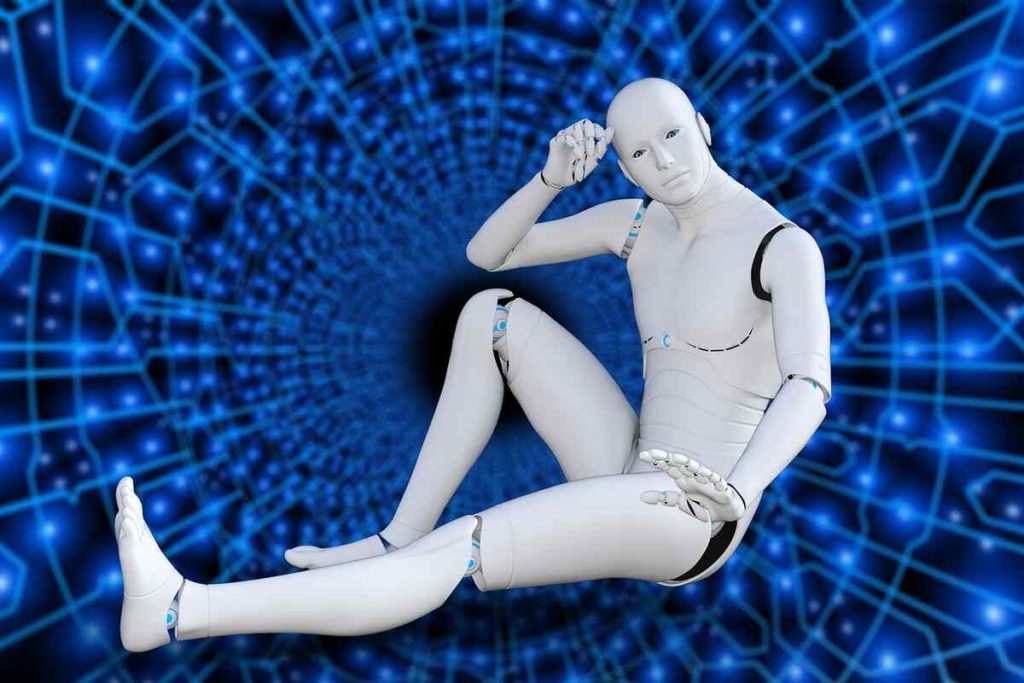Introduction
Artificial intelligence (AI) and machine learning (ML) rapidly transform several industries. While ML is a subset of AI focusing on algorithms and statistical models for learning and decision-making, AI refers to developing intelligent systems. Harnessing the potential of AI and ML requires understanding their distinctions and applications. Read on to explore more about these powerful technologies.
Understanding Artificial Intelligence
AI strives to develop intelligent machines capable of carrying out operations that ordinarily call for human intelligence. AI systems can think, learn, perceive, and decide using data and patterns. It includes a variety of technologies, including robots, computer vision, and natural language processing. AI is divided into two categories: narrow AI, created for specialized tasks, and general AI, displaying intelligence akin to that of humans. Numerous industries, including healthcare, finance, customer service, and transportation, are being revolutionized by AI, which also influences the direction of technology.
Understanding Machine Learning
A subfield of artificial intelligence (AI) called machine learning (ML) focuses on creating statistical models and algorithms that let computers learn from facts and make predictions or judgments without being explicitly programmed. ML algorithms analyze large datasets to find trends, extract insights, and enhance performance over time. The learning process is divided into three categories: supervised learning, in which models are taught using labeled data; unsupervised learning, in which patterns in unlabeled data are found; and reinforcement learning, in which trial-and-error encounters train models.
Differences Between AI and ML
Machine learning and artificial intelligence are related ideas but differ in numerous aspects.
Relationship
ML is a method applied by AI systems. It makes it possible for AI systems to gain knowledge from data, spot patterns, and form conclusions or predictions. Artificial Intelligence services can employ ML algorithms together with other elements to achieve intelligent behavior.
Scope and Capabilities
AI is a larger area that tries to develop intelligent computers capable of imitating human intelligence across multiple domains. It includes machine learning (ML) and other technologies, including computer vision and natural language processing. On the other hand, ML is a branch of AI that specializes in creating models and algorithms for learning from data.
Data Dependency
For training and learning, ML significantly relies on data. Labeled or unlabeled datasets are necessary for ML algorithms to analyze and extract patterns. Conversely, AI covers a wider spectrum of decision-making procedures that are not data-dependent. Other methods, such as rule-based reasoning or expert systems, may be used by AI systems.
Uses of Artificial Intelligence
Artificial intelligence (AI) revolutionizes how decisions are made, and tasks are carried out across various industries. Key applications of AI include:
- AI is utilized for drug discovery, patient monitoring, medical diagnostics, and individualized treatment programs.
- AI supports algorithmic trading, risk assessment, fraud detection, and customized financial advice.
- AI-powered chatbots and virtual assistants improve customer assistance interactions and offer prompt responses.
- AI is advancing autonomous driving, traffic control, and route optimization in the transportation sector.
- By examining trends and anomalies in network data, artificial intelligence (AI) aids in detecting and mitigating cybersecurity risks.
Uses of Machine Learning
Here are a few significant applications of machine learning:
- Machine learning makes image classification, facial recognition, and accurate object detection possible.
- To find and stop financial and cybersecurity concerns, machine learning (ML) discovers patterns of fraudulent behavior.
- ML examines user behavior to offer fraud analytics services across various topics.
- Phrase understanding, sentiment analysis, and phrase production for chatbots and voice assistants are all made possible by natural language processing, or ML.
- Based on previous data, ML models anticipate and predict sales, demand, and risk.
Conclusion
Machine learning (ML) and artificial intelligence (AI) are revolutionizing various industries and how work is done and decisions are made. The vast potential and significance of AI and ML in influencing the future are highlighted by their wide range of applications in industries such as healthcare, banking, customer service, transportation, and more.
Introduction
Artificial intelligence (AI) and machine learning (ML) rapidly transform several industries. While ML is a subset of AI focusing on algorithms and statistical models for learning and decision-making, AI refers to developing intelligent systems. Harnessing the potential of AI and ML requires understanding their distinctions and applications. Read on to explore more about these powerful technologies.
Understanding Artificial Intelligence
AI strives to develop intelligent machines capable of carrying out operations that ordinarily call for human intelligence. AI systems can think, learn, perceive, and decide using data and patterns. It includes a variety of technologies, including robots, computer vision, and natural language processing. AI is divided into two categories: narrow AI, created for specialized tasks, and general AI, displaying intelligence akin to that of humans. Numerous industries, including healthcare, finance, customer service, and transportation, are being revolutionized by AI, which also influences the direction of technology.
Understanding Machine Learning
A subfield of artificial intelligence (AI) called machine learning (ML) focuses on creating statistical models and algorithms that let computers learn from facts and make predictions or judgments without being explicitly programmed. ML algorithms analyze large datasets to find trends, extract insights, and enhance performance over time. The learning process is divided into three categories: supervised learning, in which models are taught using labeled data; unsupervised learning, in which patterns in unlabeled data are found; and reinforcement learning, in which trial-and-error encounters train models.
Differences Between AI and ML
Machine learning and artificial intelligence are related ideas but differ in numerous aspects.
Relationship
ML is a method applied by AI systems. It makes it possible for AI systems to gain knowledge from data, spot patterns, and form conclusions or predictions. Artificial Intelligence services can employ ML algorithms together with other elements to achieve intelligent behavior.
Scope and Capabilities
AI is a larger area that tries to develop intelligent computers capable of imitating human intelligence across multiple domains. It includes machine learning (ML) and other technologies, including computer vision and natural language processing. On the other hand, ML is a branch of AI that specializes in creating models and algorithms for learning from data.
Data Dependency
For training and learning, ML significantly relies on data. Labeled or unlabeled datasets are necessary for ML algorithms to analyze and extract patterns. Conversely, AI covers a wider spectrum of decision-making procedures that are not data-dependent. Other methods, such as rule-based reasoning or expert systems, may be used by AI systems.
Uses of Artificial Intelligence
Artificial intelligence (AI) revolutionizes how decisions are made, and tasks are carried out across various industries. Key applications of AI include:
- AI is utilized for drug discovery, patient monitoring, medical diagnostics, and individualized treatment programs.
- AI supports algorithmic trading, risk assessment, fraud detection, and customized financial advice.
- AI-powered chatbots and virtual assistants improve customer assistance interactions and offer prompt responses.
- AI is advancing autonomous driving, traffic control, and route optimization in the transportation sector.
- By examining trends and anomalies in network data, artificial intelligence (AI) aids in detecting and mitigating cybersecurity risks.
Uses of Machine Learning
Here are a few significant applications of machine learning:
- Machine learning makes image classification, facial recognition, and accurate object detection possible.
- To find and stop financial and cybersecurity concerns, machine learning (ML) discovers patterns of fraudulent behavior.
- ML examines user behavior to offer fraud analytics services across various topics.
- Phrase understanding, sentiment analysis, and phrase production for chatbots and voice assistants are all made possible by natural language processing, or ML.
- Based on previous data, ML models anticipate and predict sales, demand, and risk.
Conclusion
Machine learning (ML) and artificial intelligence (AI) are revolutionizing various industries and how work is done and decisions are made. The vast potential and significance of AI and ML in influencing the future are highlighted by their wide range of applications in industries such as healthcare, banking, customer service, transportation, and more.




